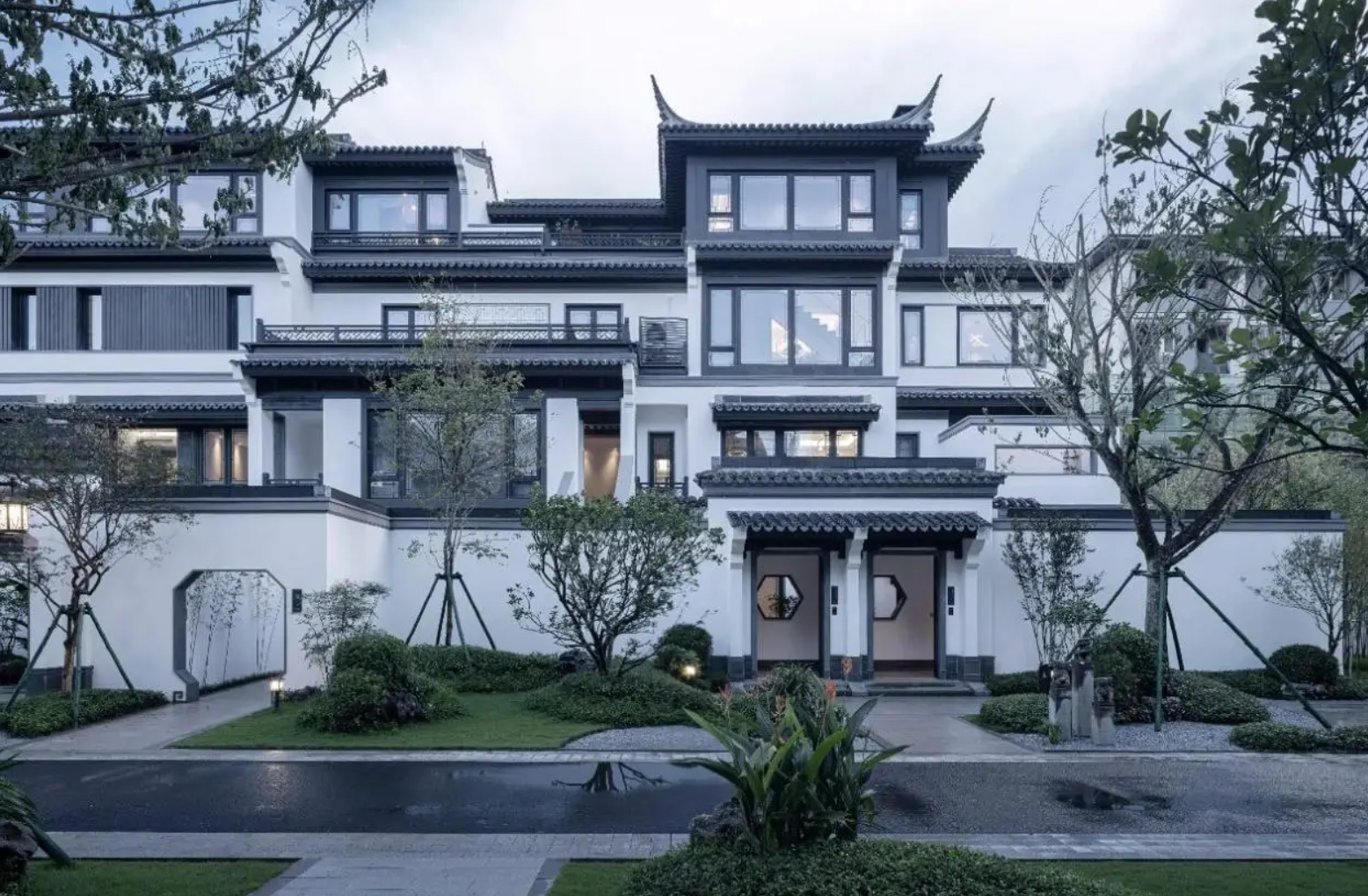Architectural exterior coatings come in various types, each with distinct characteristics and applications. Latex paint is easy to apply and environmentally friendly but has weaker weather resistance. Elastic coatings can cover cracks and offer good durability. Textured coatings provide a rich decorative effect with strong adhesion. Metallic paint offers a modern look but lacks elasticity. Organosilicon and polymer coatings are durable and resistant to stains, while mineral and inorganic coatings are environmentally friendly and fire-resistant. Lime and cement paints are more traditional options with specific advantages. Selecting the right coating depends on factors like appearance, weather resistance, environmental friendliness, and cost, ensuring the best match for a building’s exterior needs.

Architectural exterior coatings are materials used for the decoration and protection of the exterior surfaces of buildings. There are various types of exterior coatings, each with its unique properties and suitable applications. Below is a detailed introduction to the common types of architectural exterior coatings, along with a comparative table.
Types and Characteristics of Architectural Exterior Coatings
1. Latex Paint
Latex paint is a water-based coating made from synthetic resin emulsions, pigments, fillers, and additives. It is easy to apply, dries quickly, and has good water resistance and scrub resistance. Latex paints are available in various finishes, such as matte, gloss, flat, semi-gloss, satin, and high-gloss. They also come in different decorative effects, like smooth, textured, and stippled finishes. However, latex paints have relatively weaker weather resistance and water resistance, and they may fade over time or mildew in high-humidity environments.
2. Elastic Coatings
Elastic coatings are made from synthetic resin emulsions, pigments, fillers, and additives. When applied in a certain thickness, they exhibit elasticity, which allows them to cover fine cracks caused by substrate expansion and contraction. Elastic coatings come in different types, such as solvent-based elastic coatings, emulsion-based elastic coatings, and inorganic polymer elastic coatings. Solvent-based elastic coatings have good weather resistance and stain resistance but can cause environmental pollution during application. Inorganic polymer elastic coatings are highly durable, with excellent aging resistance, high-temperature resistance, and corrosion resistance.
3. Textured Coatings
Textured coatings are made from synthetic resin emulsions, pigments, fillers, and additives. When applied in a certain thickness, they form a textured coating with elasticity. These coatings offer a rich variety of decorative effects, strong three-dimensionality, good flexibility, high moldability, strong adhesion, acid and alkali resistance, no fading, no peeling, and no cracking.
4. Metallic Paint
Metallic paint is formulated with metal powders (such as copper or aluminum) as pigments. It has a metallic luster, reflects light, and gives the building exterior a metallic appearance. It is suitable for modern or industrial-style buildings. However, this type of paint lacks elasticity and is not suitable for areas with external insulation.
5. Organosilicon Coatings
Organosilicon coatings have excellent weather resistance and protective properties, as well as water and stain resistance. They are suitable for high-end building exterior decoration.
6. Polymer Coatings
Polymer coatings are suitable for the exterior decoration of mid-to-high-end residential buildings and have good durability and stain resistance.
7. Mineral Coatings
Mineral coatings are made from natural materials such as stone powder and gypsum and are environmentally friendly. They are suitable for the exterior decoration and protection of various buildings.
8. Inorganic Coatings
Inorganic coatings are primarily composed of inorganic materials such as water glass and calcium oxide. They have excellent UV resistance, aging resistance, and fire resistance, making them suitable for high-end building exterior decoration.
9. Lime Paint
Lime paint is based on lime and has good vapor permeability, which prevents mold growth. However, it has poor moisture resistance and is prone to whitening, staining, and dirt accumulation, and it cannot be cleaned easily.
10. Cement Paint
Cement paint has good adhesion to substrates and offers considerable moisture resistance. It has a similar appearance to lime paint but is more tranquil and can turn black when mixed with soot.
Comparative Table of Architectural Exterior Coatings
| Coating Type | Characteristics | Advantages | Disadvantages | Suitable Applications |
|---|---|---|---|---|
| Latex Paint | Water-based, easy to apply, quick-drying, water-resistant, scrub-resistant. | Easy to apply, rich colors, environmentally friendly. | Weaker weather and water resistance, prone to fading and mildew in humid conditions. | Mid-to-high-end residential and commercial building exteriors, where color and application efficiency are important. |
| Elastic Coatings | Elastic, covers fine cracks, good weather and stain resistance. | Effectively covers cracks, good elasticity, long service life. | Solvent-based coatings can cause environmental pollution during application, inorganic polymer coatings are more expensive. | Building exteriors prone to cracking, such as high-rise buildings and exteriors with external insulation. |
| Textured Coatings | Forms a textured coating with elasticity, acid and alkali resistance, no fading. | Rich decorative effects, strong three-dimensionality, good flexibility, strong adhesion. | Limited color options, higher application requirements. | Building exteriors that require a natural, rustic style. |
| Metallic Paint | Has a metallic luster, reflects light, gives a metallic appearance. | Modern decorative effect, high gloss. | Lacks elasticity, not suitable for areas with external insulation, more expensive. | Modern and industrial-style building exteriors. |
| Organosilicon Coatings | Excellent weather resistance, protective properties, water and stain resistance. | Excellent weather resistance, water and stain resistance, long service life. | More expensive, strict application requirements. | High-end building exteriors, where weather and water resistance are important. |
| Polymer Coatings | Good durability and stain resistance, suitable for mid-to-high-end residential exteriors. | Good durability, strong stain resistance, rich colors. | Medium price, slightly weaker weather resistance than organosilicon coatings. | Mid-to-high-end residential building exteriors. |
| Mineral Coatings | Made from natural materials like stone powder and gypsum, environmentally friendly. | Environmentally friendly, good breathability, non-toxic. | Weaker weather and stain resistance, limited color options. | Building exteriors where environmental friendliness is important. |
| Inorganic Coatings | Primarily composed of inorganic materials like water glass and calcium oxide, UV and aging resistance, fire resistance. | Excellent UV and aging resistance, fire resistance. | More difficult to apply, more expensive. | High-end building exteriors, where fire and aging resistance are important. |
| Lime Paint | Good vapor permeability, but poor moisture resistance, prone to whitening and staining, cannot be cleaned easily. | Good breathability, inexpensive. | Poor moisture resistance, prone to whitening and staining, cannot be cleaned. | Building exteriors where breathability is important but moisture and stain resistance are not critical. |
| Cement Paint | Good adhesion to substrates, considerable moisture resistance, similar appearance to lime paint. | Good moisture resistance, strong durability. | Limited color options, similar appearance to lime paint. | Industrial building lower levels and other areas with low decorative requirements. |
